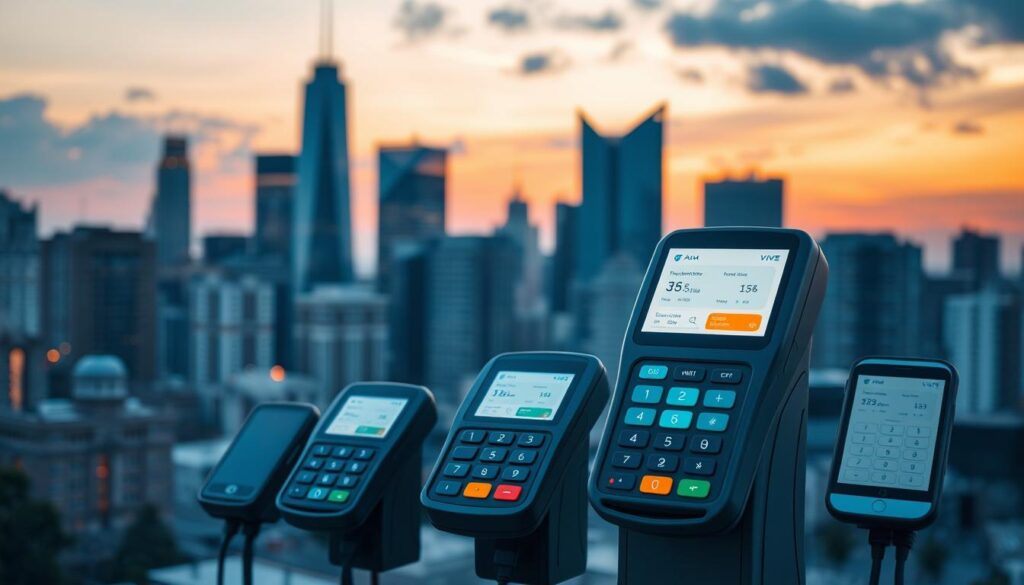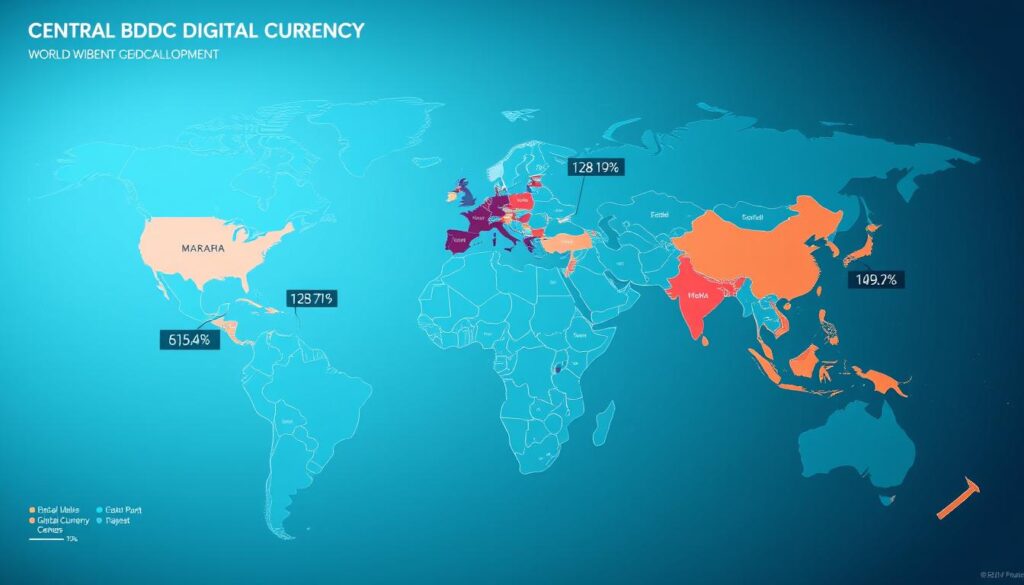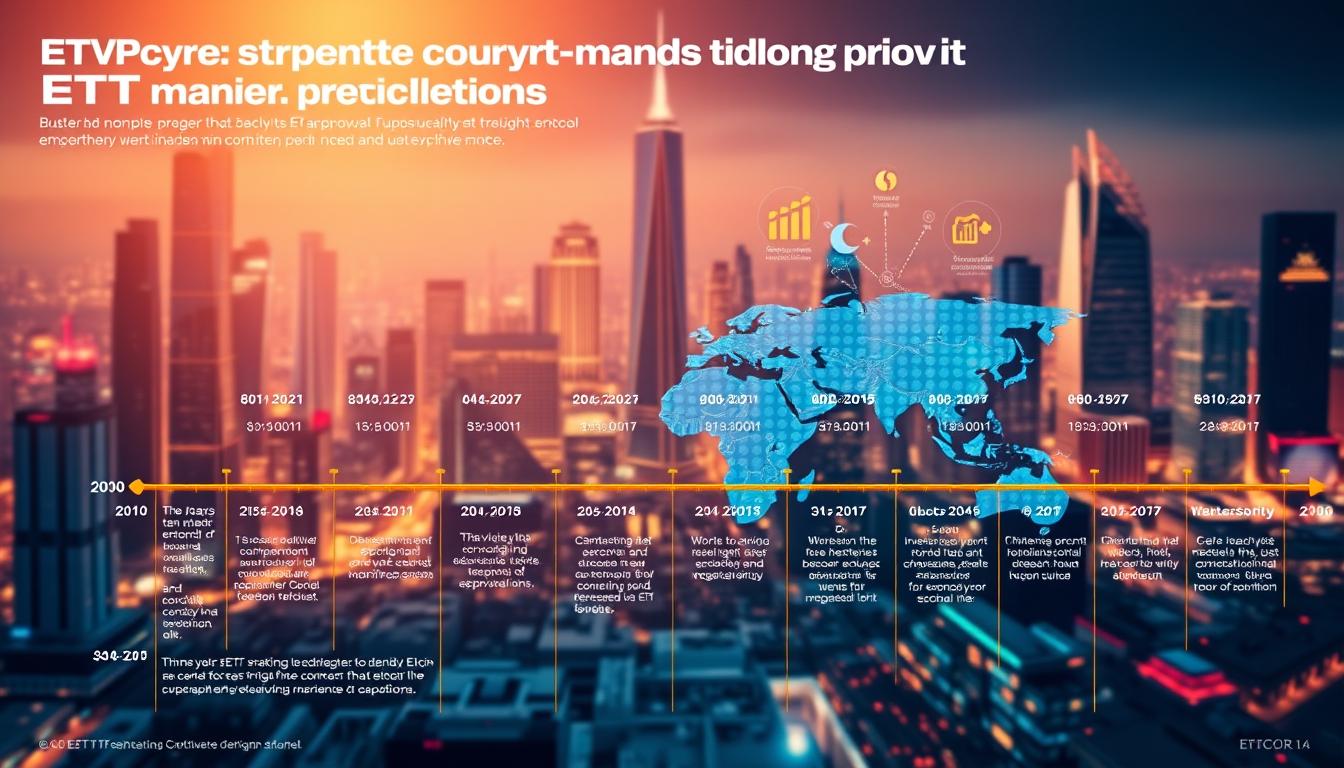Now Reading: Central Bank Digital Currency Development Progress Update
- 01
Central Bank Digital Currency Development Progress Update
Central Bank Digital Currency Development Progress Update

This report tracks the latest work on national electronic money initiatives and explains why that work matters now for payment rails, stability, and sovereignty.
The update covers timelines, pilots, and policy debates shaping the near future of retail and wholesale systems. It draws on public research, pilot results, and cross‑jurisdiction comparisons to give clear, actionable information for U.S. decision‑makers.
Global scale is striking: authorities in 134 countries are exploring new bank digital approaches, and most G20 peers are in advanced stages while the United States faces legislative headwinds after a May 2024 House bill. China began e‑CNY pilots in 2020, and the Eurosystem started a digital euro preparatory phase in November 2023 with trials possible by late 2025 and proposed holding limits near €3,000.
Read on for an evidence‑based guide to retail vs. wholesale models, offline features, interoperability, data protection, and cross‑border corridors that could reshape payments worldwide.
Why CBDC Progress Matters Now for the United States and Global Payment Systems
Policymakers and payments teams now track pilots and laws that could reshape how money moves between people and institutions.
User intent: readers want timely updates on real‑world pilots, policy milestones, and practical timelines as central bank authorities evaluate next steps for a new form of public money.

User context: pilots, timelines, and law
Many G20 economies are advancing work and running live tests. In the United States, the House passed a May 2024 bill that would prohibit a Fed “digital dollar,” shaping domestic strategy while peers proceed.
Defining retail and wholesale use cases
Basic definition: a central bank liability in electronic form, distinct from private tokens. It can be designed for retail access or for wholesale use among institutions.
Retail designs can change consumer payments, inclusion, and competition with existing services. Wholesale pilots focus on high‑value settlement, RTGS enhancements, and delivery‑versus‑payment for securities.
- Why this matters: modernization may boost resilience, lower costs, and enable interoperability across payment systems.
- Standards & cross‑border effects: central banks set rules that influence international market access for U.S. institutions.
- Transparency: clear research and trustworthy information help address privacy, data governance, and market structure concerns.
Central bank digital currency development progress: the global snapshot at a glance
From research to live tests, the international picture is active and varied.
Scale of exploration and G20 dynamics
About 134 countries and currency unions are examining cbdc options. Most projects—roughly 102—remain in research.

Where projects stand and which are live
Since 2020, go‑lives include the Bahamas, Jamaica, Nigeria, and Zimbabwe. Seven projects were canceled (Philippines, Kenya, Denmark, Curacao, Singapore, Ecuador, Finland), showing real risks and learning curves.
Retail vs wholesale momentum
About 64.7% of initiatives target retail use for consumer payments and inclusion. Some 27% focus on wholesale systems, and 6% blend both.
Key motivations shaping trajectories
Drivers vary by country. Developing economies often prioritize inclusion and payment modernization. Advanced economies stress wholesale efficiency, interoperability, and financial stability.
- Momentum spikes: surges in 2019, 2021, and 2022 reflected tech maturation and geopolitical shifts.
- Design impacts: retail or wholesale choices shape technology, data models, and how payments providers adapt.
Regional trajectories: China, the European Union, Japan, and the United States
Regional approaches now shape how nations design and test new forms of public money. Choices reflect policy aims such as inclusion, resilience, and sanction mitigation.

China’s e-CNY pilots and aims
China launched e‑CNY trials in April 2020 and expanded to many provinces. Estimates suggest about 260 million wallets in use. Devices support offline payments, and programmability lets authorities target transfers by time, place, or purpose.
Strategically, China seeks domestic interoperability and wider cross‑border reach. Plans may route some flows via CIPS to reduce cost and time and to create alternatives to existing international payment rails.
European Union pathway
The digital euro entered a preparatory phase in November 2023 to set rules and choose providers. The design favors privacy-by-design: intermediaries manage personal data and the central bank will not view it.
The project targets trials by end‑2025 and proposes a holding limit near €3,000 to limit deposit migration while preserving convertibility.
Japan and the United States
The Bank of Japan moved from PoC Phase 1 (April 2021) to Phase 2 (March 2022) and launched a pilot on Feb 17, 2023, with updates in May 2023, May 2024, and July 18, 2025. Project Stella (2017–2020) with the ECB informed DLT use for payments and securities.
In the United States, the May 2024 House bill restricts a Fed “digital dollar.” Industry actors still pursue wholesale pilots and tokenized settlement proofs of concept.
- Data protection contrast: China’s traceability vs. the EU’s GDPR-style model.
- Implications: EU aims at union efficiency; China seeks broader standards; Japan builds technical readiness; the U.S. weighs policy limits while private pilots explore wholesale use.
For more context on policy and regional research, see the policy analysis and a trade perspective on market responses.
From proof of concept to pilots: timelines, milestones, and project stages
A clear sequence — research, proofs of concept, pilots, then go‑lives — frames how systems move from idea to live payment use.

Notable go‑lives and cancellations
Production launches since 2020 include the Bahamas, Jamaica, Nigeria, and Zimbabwe. Those go‑lives offer real tests of user adoption and resilience.
Several initiatives were canceled — Philippines, Kenya, Denmark, Curacao, Singapore, Ecuador, Finland — teaching clear lessons on scope, legal readiness, and stakeholder alignment.
BoJ milestones and Project Stella insights
Bank Japan followed a staged path: PoC Phase 1 (April 5, 2021), PoC Phase 2 (March 25, 2022), then a pilot launched Feb 17, 2023. Public progress reports ran through May 29, 2023; May 31, 2024; and July 18, 2025.
European Central Bank-BoJ Project Stella (2017–2020) tested interoperability and delivery‑versus‑payment using distributed ledger technology and ledger technology variants.
- Why staged testing matters: iterative pilots lower operational risk and refine offline, token/account, and commercial bank interfaces.
- Policy link: milestones help set holding limits and tiered rules after evidence on deposit shifts and liquidity effects.
- Variation: timelines differ by countries due to law, market maturity, and vendor ecosystems.
Design choices that shape outcomes: retail/wholesale models, token/account, and offline modes
Architecture matters. How systems route access, settle value, and handle offline transfers will drive inclusion, cost, and resilience.
Direct, indirect, and hybrid distribution
Direct models give users accounts at the issuer. Indirect models use commercial banks for wallets, onboarding, and KYC. Hybrid designs mix both to keep market roles while ensuring settlement finality.
Token vs account architectures
Token models act like cash and can enable peer-to-peer transfers and programmability. Account models tie easily into RTGS and permit holding limits or tiered remuneration that affect monetary policy and settlement.
Offline payments and resilience
Device-to-device transfers, as tested with e‑CNY, support payments during outages. Secure hardware wallets and short-range transfers are vital for disaster-prone or low-connectivity communities.
Interoperability and standardization
Harmonized formats and shared APIs link systems domestically and across borders. Research from BoJ and the ECB favors standards to avoid fragmentation and to protect privacy via minimal data collection and strong data protection.
| Model | Access | Settlement | Policy/Privacy |
|---|---|---|---|
| Direct | Issuer accounts | Central ledger, RTGS-friendly | Strong control; central visibility |
| Indirect (intermediated) | Commercial banks | Intermediary settlement; central finality | Better privacy by design; banks handle KYC |
| Token | Wallets, peer transfers | Atomic DvP via distributed ledger | Cash-like anonymity options; limits apply |
| Hybrid | Mixed channels | Flexible settlement paths | Balancing UX, policy tools, and risk |
Implications for payment systems, settlement, and cross-border operations
Wholesale innovations let treasury and market infrastructure teams optimize intraday liquidity and cut counterparty risk. They also create new options for atomic settlement that were impossible with legacy rails.
Efficiency gains and cost dynamics versus legacy rails
CBDC-enabled rails can reduce settlement time from hours or days to seconds. That reduces operating hours constraints and trims layers of correspondent fees.
Fewer intermediaries and standard messaging formats lower reconciliation work and cut costs for corporates and consumers.
Wholesale CBDC and programmable settlement
Programmable settlement unlocks RTGS improvements and securities DvP. Conditional rules automate delivery, reduce fails, and boost liquidity efficiency.
BIS research and wholesale experiments show DLT-enabled DvP/PvP can enable atomic FX settlement and better intraday cash use.
Cross-border corridors and operational gains
Corridors built on shared standards can bypass long correspondent chains and ease time zone frictions. That can enable near real‑time, low‑cost international payment flows.
- EU efforts aim to harmonize intra‑union transactions and lower fragmentation.
- China explores CIPS-based paths that could route some flows outside existing clearing networks.
| Benefit | Legacy rails | CBDC-enabled rails |
|---|---|---|
| Settlement speed | Hours–days | Seconds–minutes |
| Cost layers | Multiple intermediaries | Fewer correspondents |
| Liquidity | Higher intraday demand | Optimized intraday use |
Implementation depends on legal recognition of finality, messaging standards, and broad participation from banks, PSPs, and market infrastructures. For further technical context see the BIS wholesale experiments and a practical overview of national pilots at central bank CBDC resources.
Monetary policy, financial stability, and data protection considerations
Design choices such as holding limits and tiered remuneration shape how public electronic money interacts with banks and markets. These features influence demand for a safe public option and help protect the broader financial system.
Managing deposit migration risk: holding limits and tiered remuneration
Holding caps—for example, the EU’s proposed €3,000 limit for the digital euro—can reduce large outflows from retail deposits into public wallets.
Tiered remuneration further discourages flight to safety by making large balances less attractive. Together, these tools preserve bank intermediation and help avoid sudden liquidity pressures.
Stability advantages over private tokens and stablecoins
Public backing and par convertibility give a safe asset that is less volatile than private tokens. That reduces systemic risk from speculative crypto markets.
CBDC designs can support faster monetary policy transmission when interest features or caps are calibrated to market conditions.
Privacy contrasts: EU data protection versus centralized traceability
The european central bank’s model keeps personal data with intermediaries and rejects programmability to protect privacy.
By contrast, China’s approach allows authorities to view payment records, which aids AML/CFT enforcement but raises surveillance concerns.
- Design impacts trust: privacy and clarity boost adoption and the effectiveness of policy tools.
- Dynamic tuning: system may require revisiting caps or rates based on pilot evidence.
- Coexistence: careful rules let new instruments work alongside banks and financial services without abrupt dislocations.
Governance risks and implementation challenges
Governance choices shape whether a new public payment option helps markets or creates fresh vulnerabilities. Clear rules matter for trust, safety, and legal clarity.
AML/CFT trade-offs are central. Some jurisdictions test threshold anonymity for small transactions to balance privacy with compliance. The european central model considers limited offline anonymity for tiny amounts while keeping intermediaries responsible for checks.
Operational governance and compliance
Credentialing wallet providers, managing keys, and designing incident response are core tasks. Audit trails must exist without eroding data protection.
Compliance duties often sit with commercial banks and payment providers to leverage KYC and onboarding infrastructure.
Market structure and cross‑border risks
Commercial banks worry about deposit shifts and fee revenue losses. Many designs keep banks at the center to preserve services and stability.
Cross‑border rules add complexity: interoperability agreements, data localization, and different legal treatments of currencies and platforms require coordination among central banks, regulators, and industry.
| Risk | Mitigation | Implication |
|---|---|---|
| Vendor lock‑in | Open standards | Lower tech dependence |
| Operational failure | Phased rollouts | Faster fixes, public confidence |
| Legal gaps | Clear statutes | Reduced cancellations, better buy‑in |
Robust testing, transparent reporting, and adaptive limits help manage risk. A coordinated approach among central bank authorities, banks, and PSPs is critical to succeed.
Conclusion
Conclusion
Countries now test real-world pilots and legal frameworks that will shape how public money moves and how markets adapt.
Widespread exploration, selective go‑lives (Bahamas, Jamaica, Nigeria, Zimbabwe), and maturing trials show tangible steps toward integrating a central bank digital option into the financial system.
Regional paths differ: China scales e‑CNY with offline features, the digital euro plans trials by end‑2025, Japan refines staged pilots, and U.S. debates set policy limits.
Design choices—distribution, token vs. account, offline modes, and privacy—will determine user experience, resilience, and monetary policy effects.
Monitor pilots and specs closely; strategic coordination among central banks and industry can turn safe experiments into interoperable, public‑interest payment solutions for the future.
FAQ
What is the current global status of central bank digital initiatives?
More than 130 jurisdictions are exploring new forms of public digital money, with a mix of research, proofs of concept, pilots and a few limited launches. Activity ranges from early-stage feasibility studies to large-scale trials in China and retail design work in the European Union. Many economies emphasize cross-border use, interoperability, and resilience.
Why does this progress matter for the United States and international payment systems?
Shifts in public-money innovation can reshape how payments settle, how wholesale settlement operates, and how private providers compete. The U.S. must weigh policy, legal frameworks, and technical choices to protect monetary sovereignty, preserve financial stability, and keep U.S. payment rails interoperable with global corridors.
How do retail and wholesale initiatives differ in purpose and design?
Retail models target everyday consumer and merchant payments with a focus on access, privacy, and offline capability. Wholesale projects target interbank settlement, delivery-versus-payment and settlement finality for financial markets. Design choices—account-based or token-based, direct or intermediated distribution—vary by use case.
Which countries have progressed the furthest toward live deployments?
China’s e-CNY leads in large-scale retail pilots and merchant integration. A few smaller economies have implemented limited retail or wholesale systems. The European Central Bank and Bank of Japan remain in advanced testing or pilot phases, while the United States emphasizes wholesale experiments and policy deliberation.
What are the main policy drivers behind these projects?
Key motivations include improving payment efficiency, promoting financial inclusion, enhancing monetary sovereignty, reducing transaction costs in cross-border corridors, and providing a safer alternative to unregulated stablecoins. Risk management and financial-stability goals also shape choices.
How do token and account models affect settlement and regulation?
Token models resemble bearer instruments and can enable offline use and programmability, but raise custody and anti-money-laundering challenges. Account models sit with an issuer ledger and simplify traceability and compliance but may limit anonymity and offline functionality. Regulators weigh trade-offs when setting access rules and reporting standards.
What distribution options exist for issuing public digital money?
Distribution can be direct from the issuer to users, indirect through commercial banks and payment firms, or hybrid with layered responsibilities. Indirect and hybrid approaches preserve existing provider roles and help manage deposit migration risks, while direct issuance expands the issuer’s operational role.
How do experiments address cross-border interoperability and corridor frictions?
Projects test common messaging standards, linking arrangements, atomic settlement techniques and bridges between ledgers. Some pilots explore multi-jurisdiction clearing, while others focus on bilateral corridor solutions to reduce latency, costs, and counterparty chains.
What are the key monetary policy and stability concerns?
Policymakers consider how public digital money might shift deposits away from commercial institutions, affect credit intermediation, and alter liquidity dynamics. Tools such as holding limits, tiered remuneration and eligibility rules aim to limit deposit migration and preserve monetary transmission.
How is privacy handled across different projects?
Approaches range from privacy-by-design frameworks with strong data protection to systems with extensive traceability for law enforcement and AML/CFT needs. The European model emphasizes data protection, while other jurisdictions prioritize transparency for compliance and security.
What role does distributed ledger technology play in these initiatives?
Distributed ledgers offer programmability, potential efficiency gains and new settlement models, but they are not mandatory. Many pilots evaluate DLT alongside traditional ledgers to assess performance, scalability, and resilience for retail and wholesale tasks.
Can public digital money coexist with existing commercial services?
Yes. Many designs preserve commercial banks’ role in customer relationships and payment services through intermediated distribution or APIs. Careful governance and market structure policies help prevent disruptive deposit shifts and support service continuity.
What operational risks should jurisdictions manage during rollouts?
Authorities must plan for cybersecurity, availability, offline fallback, governance, and fraud prevention. Resilience planning for natural-disaster scenarios and contingency settlement arrangements is also critical for public confidence.
How do AML/CFT and compliance considerations shape design?
Risk-based thresholds, identity-verification tiers and transaction monitoring are common. Designers balance privacy with law-enforcement obligations, often using selective disclosure, analytics and supervision to limit illicit use while protecting users’ rights.
Where can researchers find up-to-date information on international projects?
Central bank publications, BIS reports, IMF notes and major regulators’ websites publish research updates, pilot summaries and technical papers. Academic journals and industry consortia also archive interoperability trials and technology assessments.











